If you’re planning a trip to Northern Ireland, there’s one spot you won’t want to miss: the iconic Carrick-a-Rede rope bridge. One of the top sights along the scenic Causeway Coast in County Antrim, this 20-metre-long (66 feet) rope bridge connects the mainland to the tiny island of Carrick-a-Rede, offering stunning views, a dash of history, and an exhilarating experience for visitors.
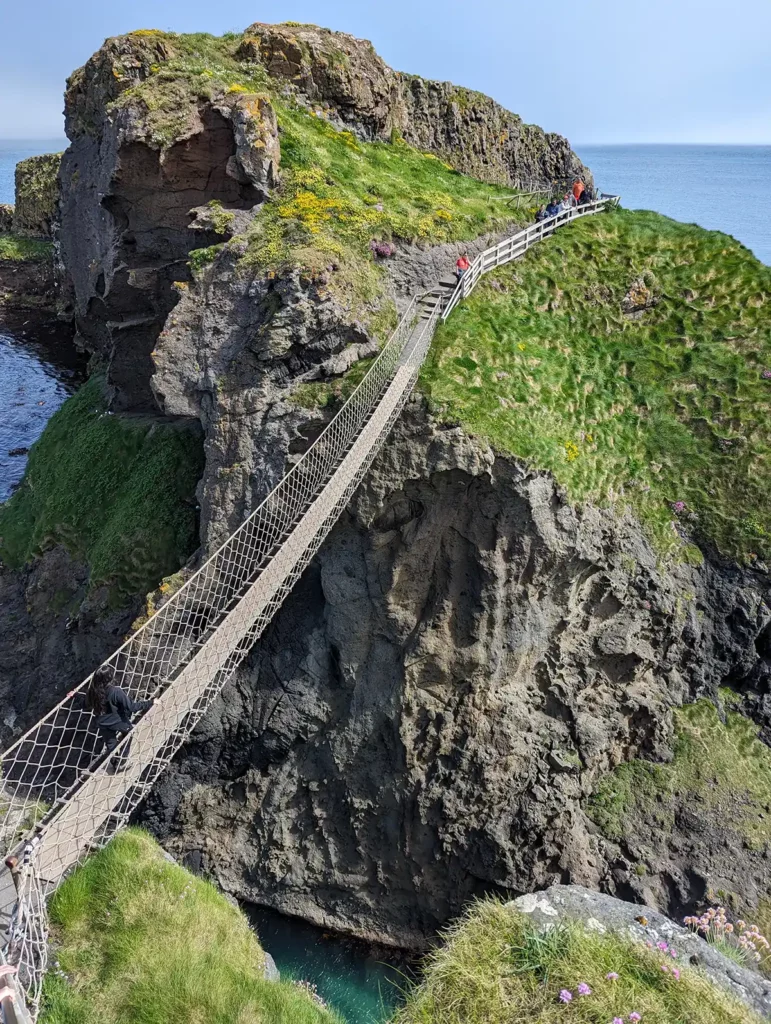
A brief history of Carrick-a-Rede
The Carrick-a-Rede rope bridge has been an iconic part of the Northern Ireland coastline for more than 350 years. Originally constructed by local fishermen to access prime salmon-fishing spots, it was a rather precarious structure made of planks and ropes. There are photos of it in the late 1800s, and I’m not sure I’d have been rushing to cross it back then!
Over the centuries, the bridge has thankfully been reinforced and rebuilt, and today it’s a sturdy and safe crossing, maintained by the National Trust. The site is no longer used for fishing (the last fisherman left the island in 2002), but it continues to attract adventurous visitors from all over the world.
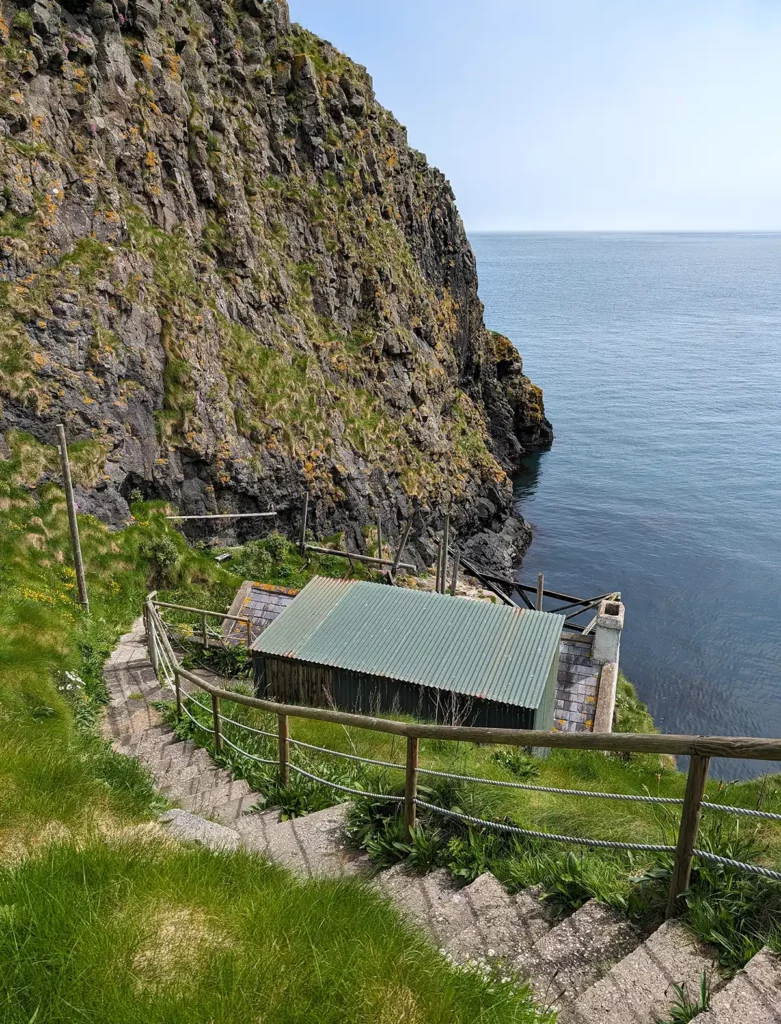
Booking tickets
It’s free to walk to the bridge (parking without a bridge ticket costs £10 per car), but you’ll need a ticket to cross over to the island. Tickets are strictly timed to avoid long queues building up at the bridge, so it’s best to book in advance to be sure of getting a good time slot.
Tickets for adults cost £15.50 for adults and include a reserved parking spot. At quieter times of year, early and late slots are a little cheaper. It’s free to cross the bridge if you’re a National Trust member but it’s still best to book a slot.
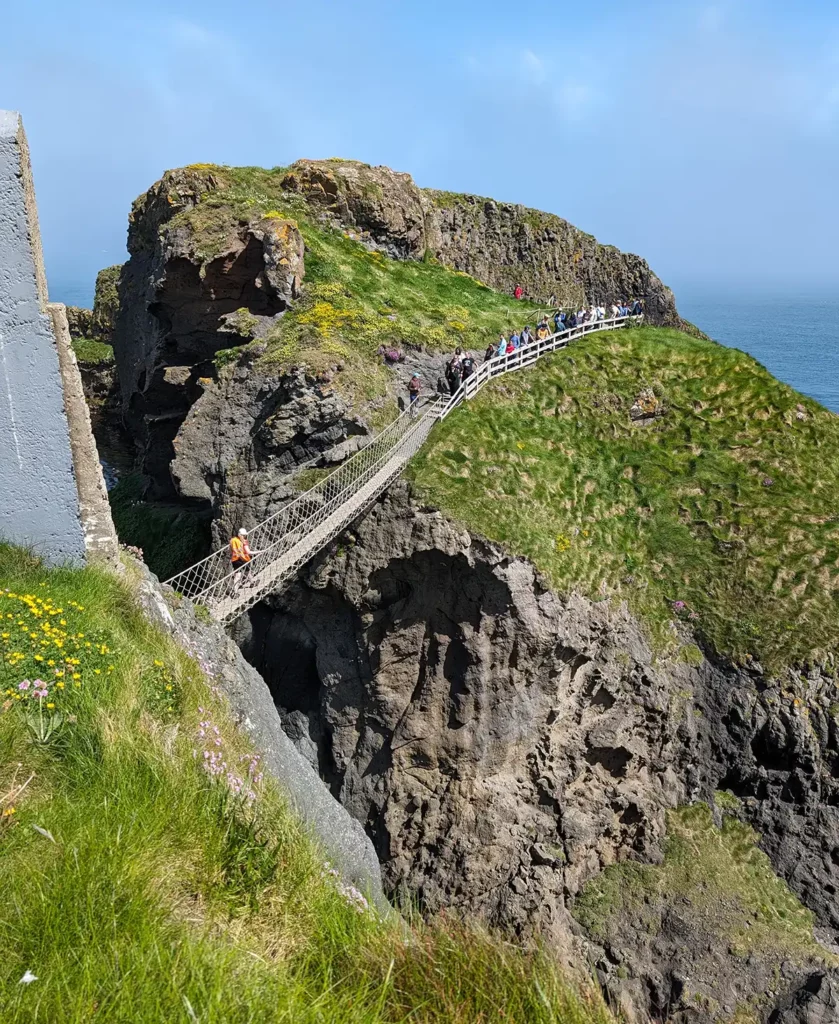
I booked a morning slot for my trip to Carrick-a-Rede which worked really well, as it gave me the rest of the day to see other sights nearby like the Giant’s Causeway, Ballintoy Harbour and Dunseverick Castle. None of these need a timed booking so visiting Carrick-a-Rede first means you won’t need to watch the clock.
Getting to the bridge
The entrance to Carrick-a-Rede is just off the B15 road between Ballycastle and Ballintoy (Google Maps link). Unlike at the Giant’s Causeway, there’s no real visitor centre here, but there is a fairly large, gravelly car park, toilets, a National Trust office and the Weighbridge tea room, which serves amazing toasties!
I recommend hiring a car to visit the Causeway Coast but you can get to Carrick-a-Rede by bus. The 172 and 402 Translink bus routes between Coleraine and Ballycastle stop at Carrick-a-Rede, with services around every 30 minutes during the day.
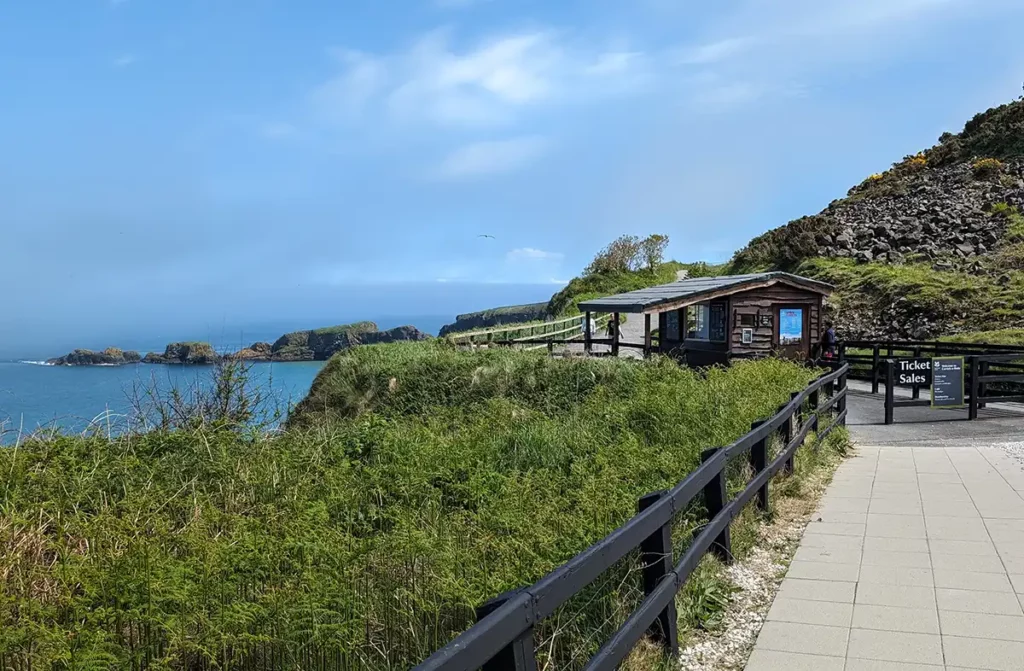
You’ll show your reservation for the crossing at the ticket hut at the start of the path, and one of the National Trust team will give you a ticket for actually crossing the bridge. Make sure you keep this safe as you’ll be asked to show it at the bridge entrance!
Walking the coastal path
The path from the car park to the bridge is just under a mile long, and took me around 20 minutes. While it’s a relatively short walk, it offers spectacular coastal views. You can see dramatic cliffs, crashing waves, and on clear days, the distant Rathlin Island or even the coast of Scotland. I was incredibly lucky with the weather when I visited, and the sea was the most beautiful shade of turquoise.
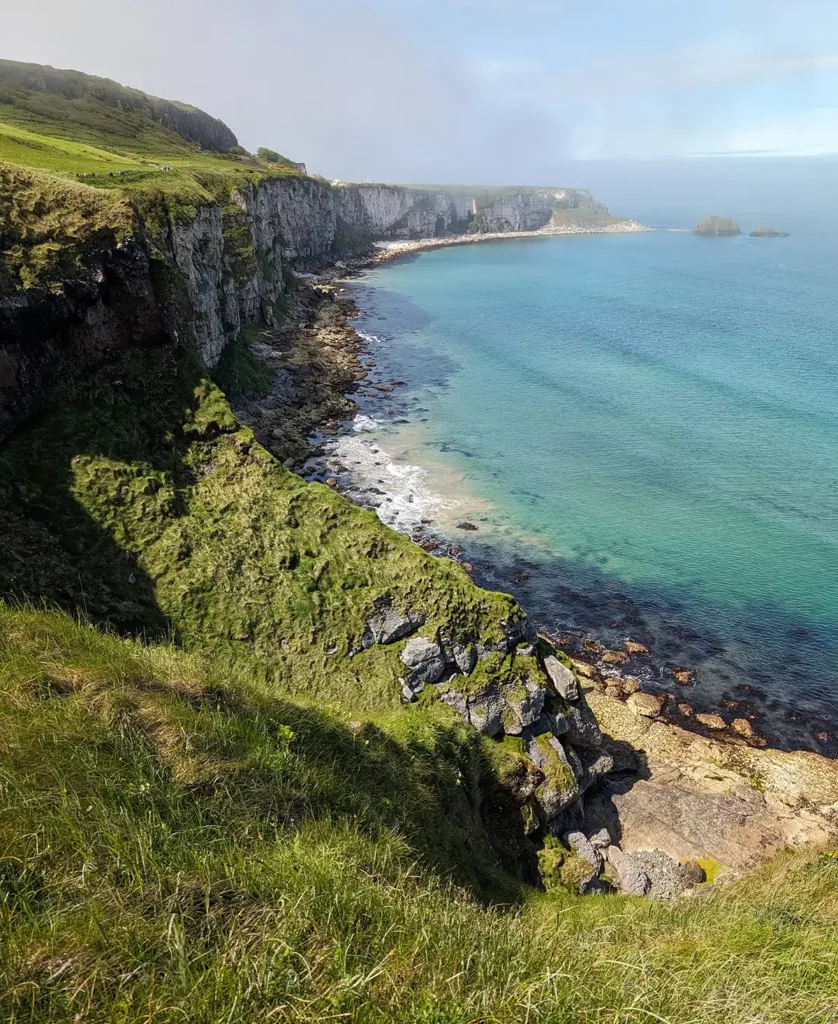
The path to the bridge is mostly wide and straightforward, but there are a few steeper sections. Just before you get to the bridge there’s a long flight of stone steps which could be challenging for those with limited mobility, and to get onto the bridge there’s a very steep set of metal stairs.
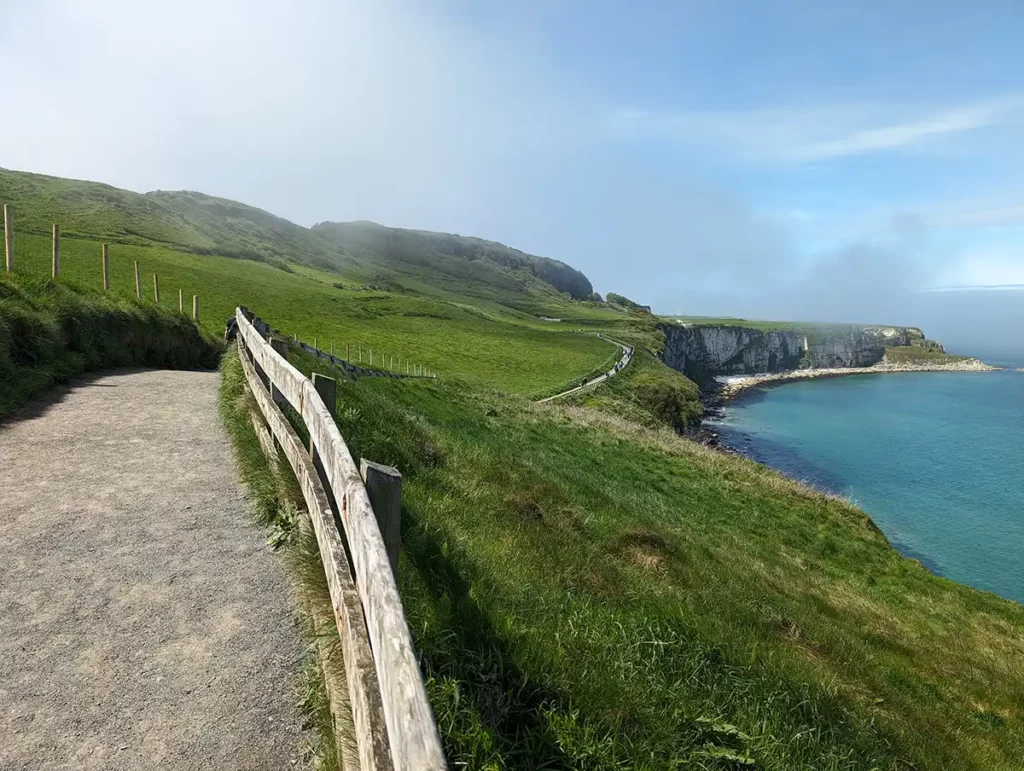
If you enjoy this walk, I highly recommend the short walk to Dunseverick Falls, another beautiful sight on the Causeway Coast.
Crossing the bridge
The real highlight, of course, is crossing the rope bridge itself. Suspended 30 metres (98 feet) above the rocks of the Atlantic Ocean, the bridge might look intimidating, but it’s safe and well-maintained. The gentle sway on windy days adds a touch of excitement, but don’t worry – hundreds of thousands of people cross it each year without issue. If the weather is too bad, the bridge will be closed.

To get across, you’ll need to show your crossing ticket to the National Trust member of staff at the gate, then wait on the steps until you get the signal that it’s ok to cross.
If you (or anyone visiting with you) are nervous about heights, it’s worth knowing that the crossing is shorter than it looks at just 20 metres – and you’ll be rewarded with unbeatable views once you reach the other side. If you do get to the bridge and feel that you can’t make the crossing, that’s ok; the staff see this all the time and will help you get back to where you feel safe.
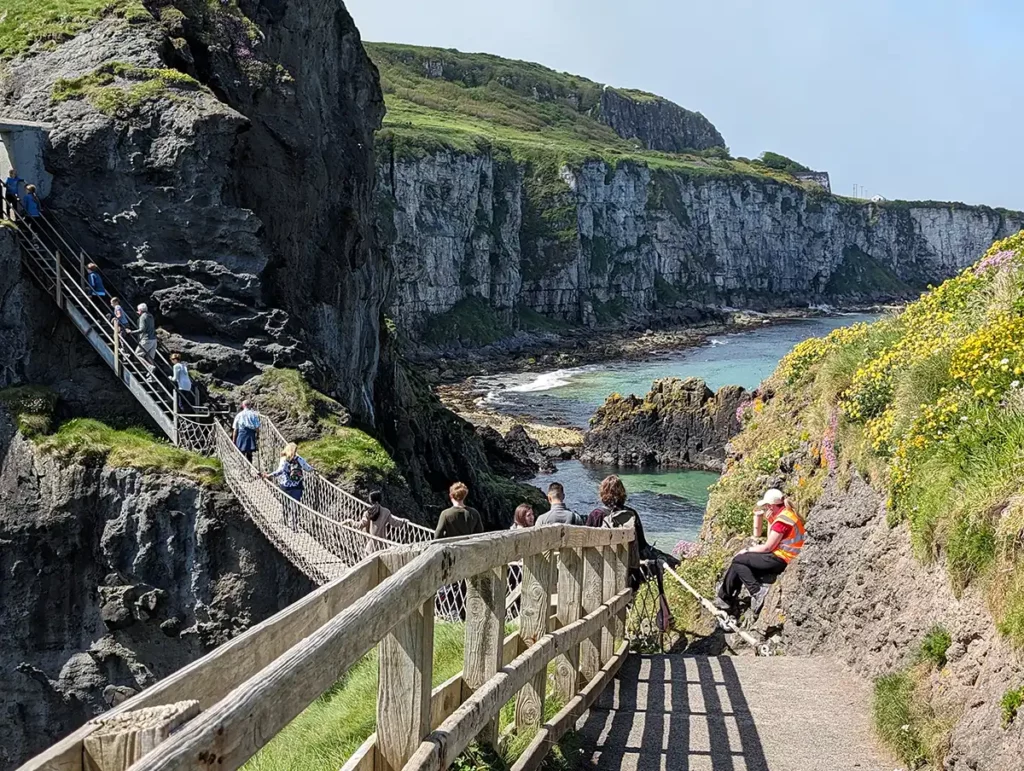
You can take photos or videos as you’re walking across, but try to be considerate of the people waiting either behind you or waiting to cross from the other side. There are great views of the bridge from both the island and the mainland, so it’s not your only chance to get a snap.
What to expect on Carrick-a-Rede island
Carrick-a Rede island is very small but offers panoramic views of the coastline and a peaceful spot to take in the wild beauty of the area. There aren’t any facilities on the island whatsoever, but it’s still worth going across the bridge for the experience and for the lovely views back to the mainland.
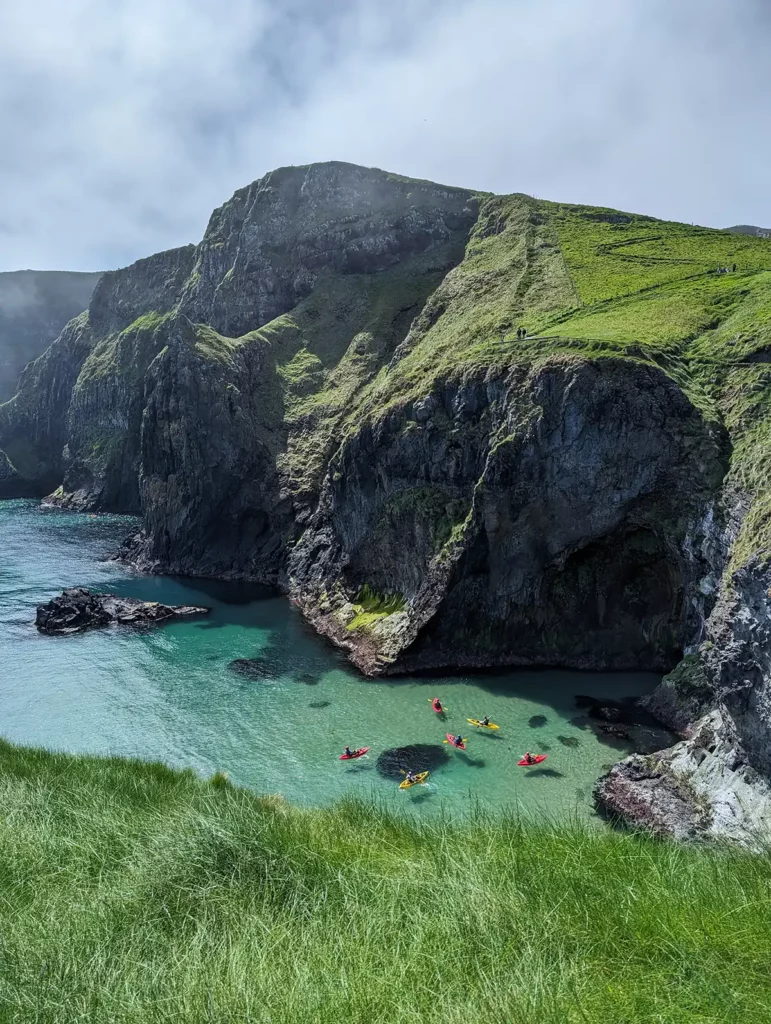
Carrick-a-Rede and Game of Thrones
One of the big reasons why people visit this part of Northern Ireland is to see the many Game of Thrones locations. Unfortunately, Carrick-a-Rede isn’t one of them!
While the show’s Iron Islands scenes did include a rope bridge (most famously in the season 6 scene when Balon Greyjoy, King of the Iron Islands falls to his death after a fight with his brother Euron), it wasn’t Carrick-a-Rede. The bridge in the show was almost certainly CGI.
The rope bridge did appear in the distant background of the scenes in season 2 where we’re introduced to Brienne of Tarth. The scenes were filmed at nearby Larrybane Quarry, an old limestone quarry a few minutes walk west along the coast from the main Carrick-a-Rede car park.
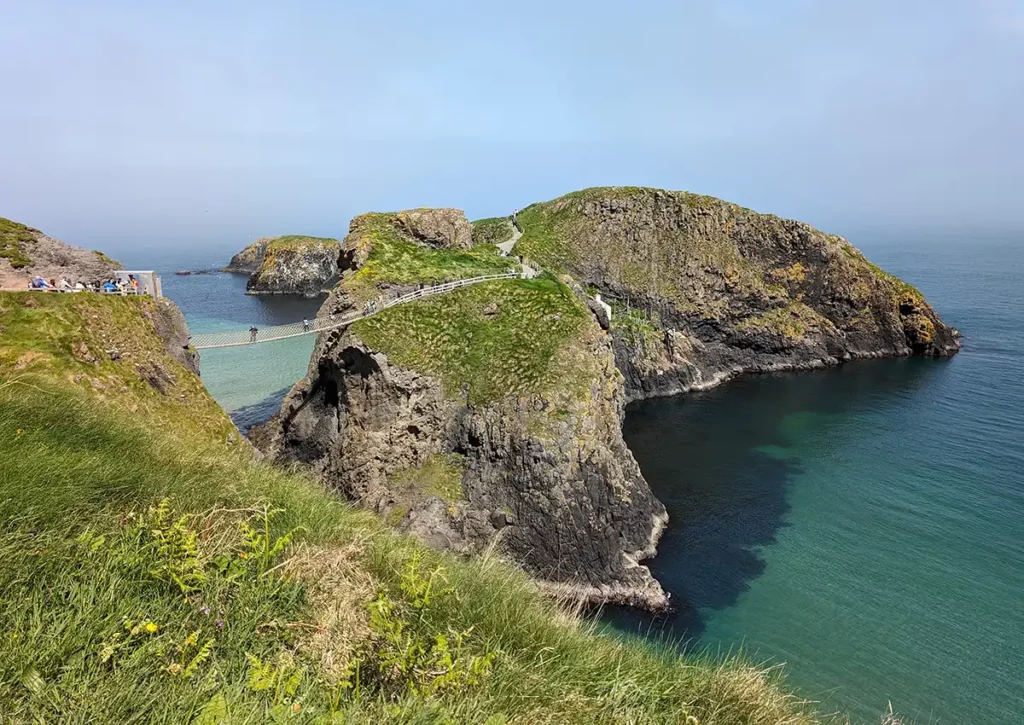
Practical information for visitors
Location
Carrick-a-Rede is located on the Antrim Coast (Google Maps link)
Opening hours
The bridge is open year-round, but it can close in bad weather, so be sure to check ahead on the National Trust website. The opening times vary by month, with longer opening hours in the summer and shorter hours in the winter when it gets dark earlier.
Entrance fee
There is a fee to cross the bridge. Make sure you book a bridge ticket online to be sure that you’ll be able to cross.
Best time to visit
The bridge can get crowded during peak tourist season (June-August and weekends), so aim to visit early in the morning or late afternoon for the best experience.
Weather
Be prepared for unpredictable Northern Irish weather. It can be windy on the cliffs, and rain is always a possibility! Check the weather in advance, dress warmly if needed, and bring a waterproof jacket.
Wildlife
Keep an eye out for seabirds like oystercatchers, guillemots, razorbills, kittiwakes and fulmars. You may be lucky enough to see basking sharks, dolphins or porpoises in the water below.
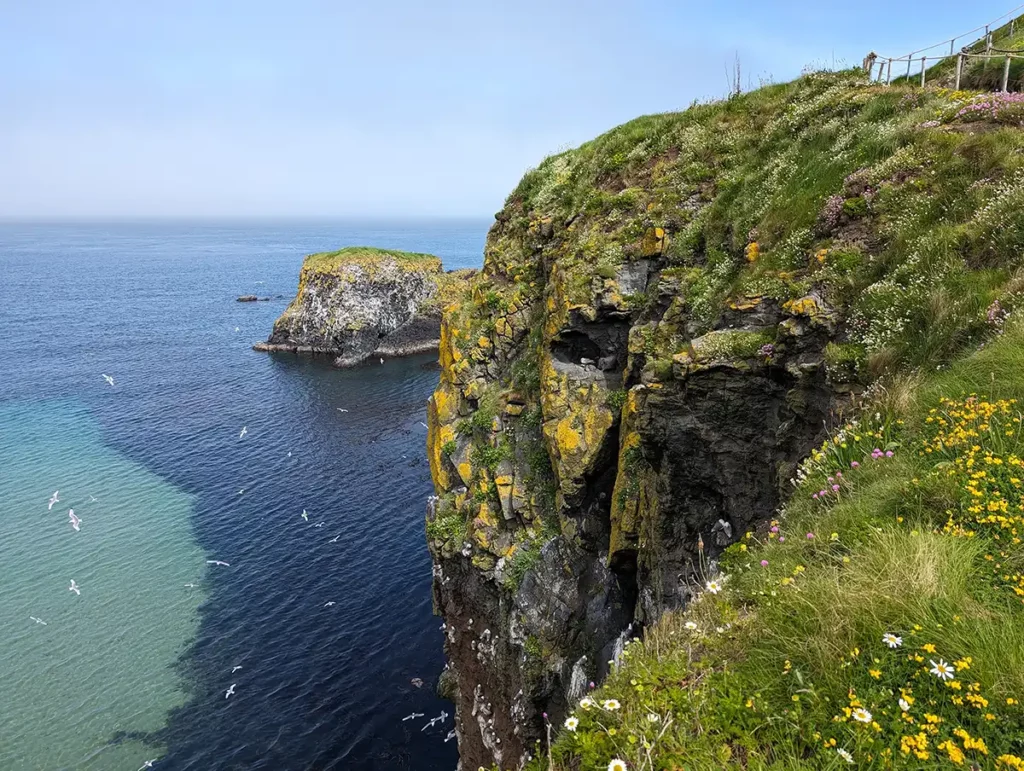
Safety and accessibility
The path to the bridge is rugged, with steep sections and uneven ground. It’s important to wear sturdy shoes and take care on the way, especially if it’s been raining. The paths on the island are significantly more uneven than those on the coastal path leading up to the bridge and can be slippy.
For those with mobility concerns, the walk may not be suitable. You can read more detailed information about accessibility at Carrick-a-Rede on the AccessAble website.
The bridge closes in high winds or storms, so always check weather conditions before making the journey.
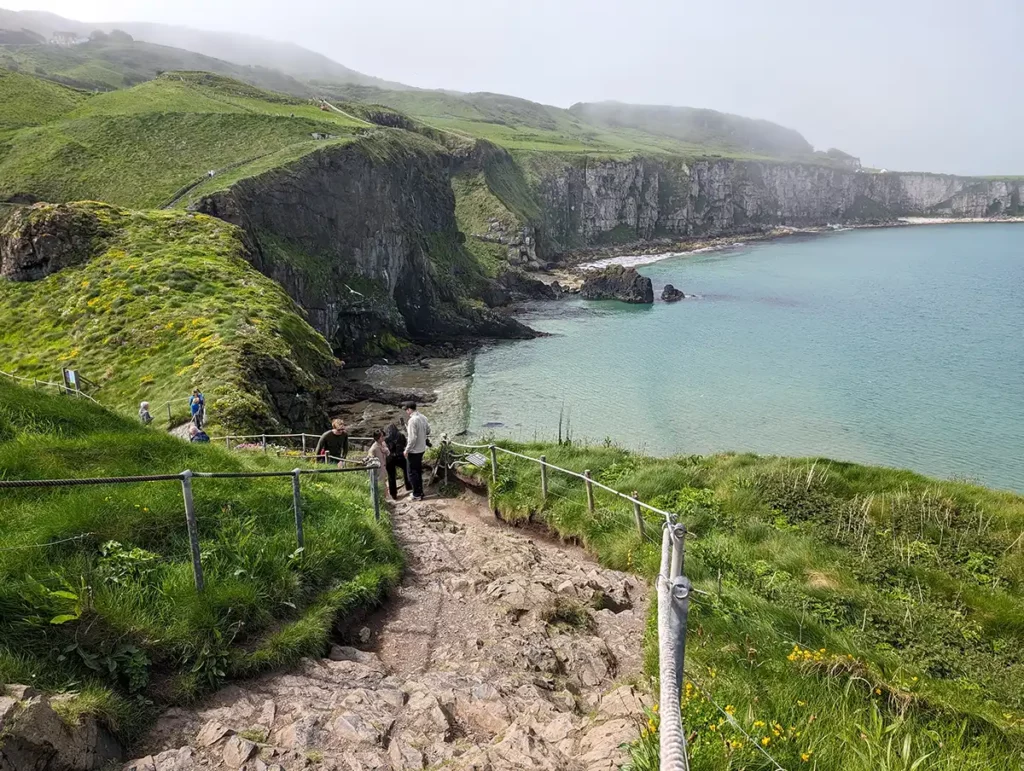
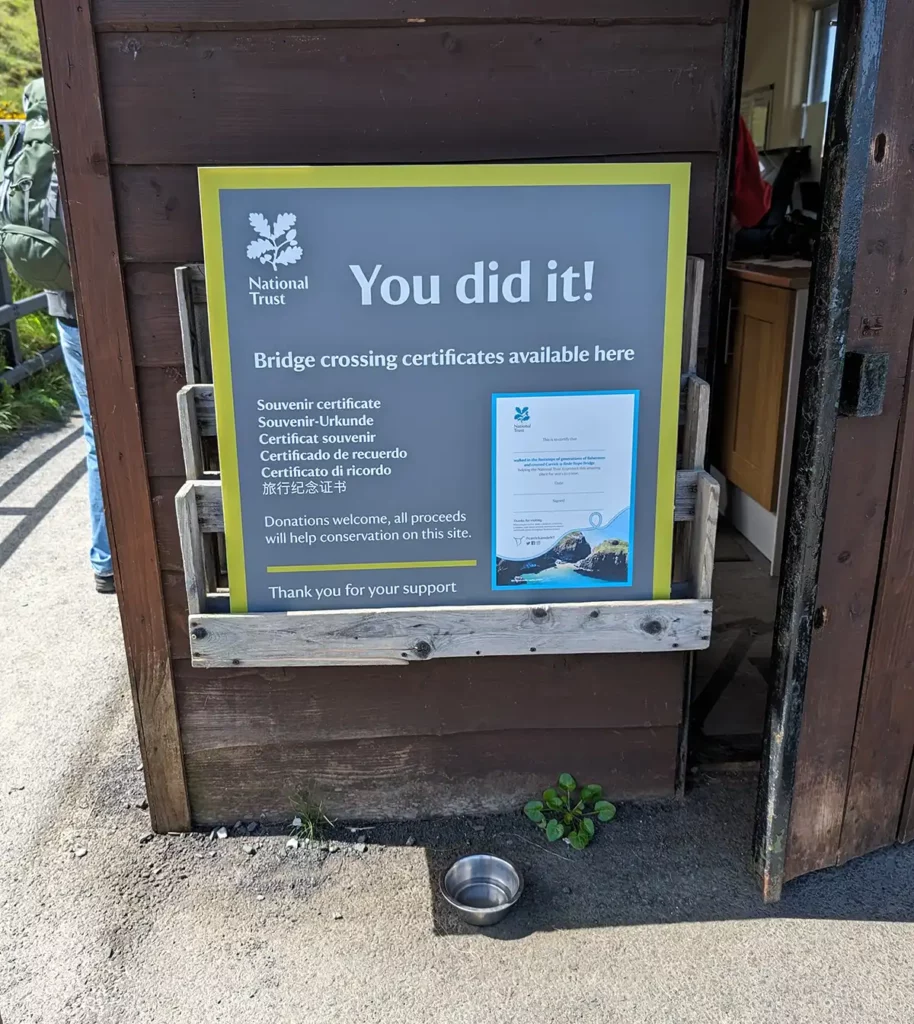
More places to see near Carrick-a-Rede
Northern Ireland’s Causeway Coast is packed with amazing natural attractions, and visiting Carrick-a-Rede is easy to combine with nearby sights. Here are some of the best places to visit near Carrick-a-Rede.
- Giant’s Causeway, 7.5 miles, 16 minute drive
- Dunluce Castle, 4.5 miles, 11 minute drive
- White Rocks Beach, 8.3 miles, 18 minute drive
- Dark Hedges, 11.4 miles, 21 minute drive
- Ballintoy harbour, 1.1 miles, 3 minute drive
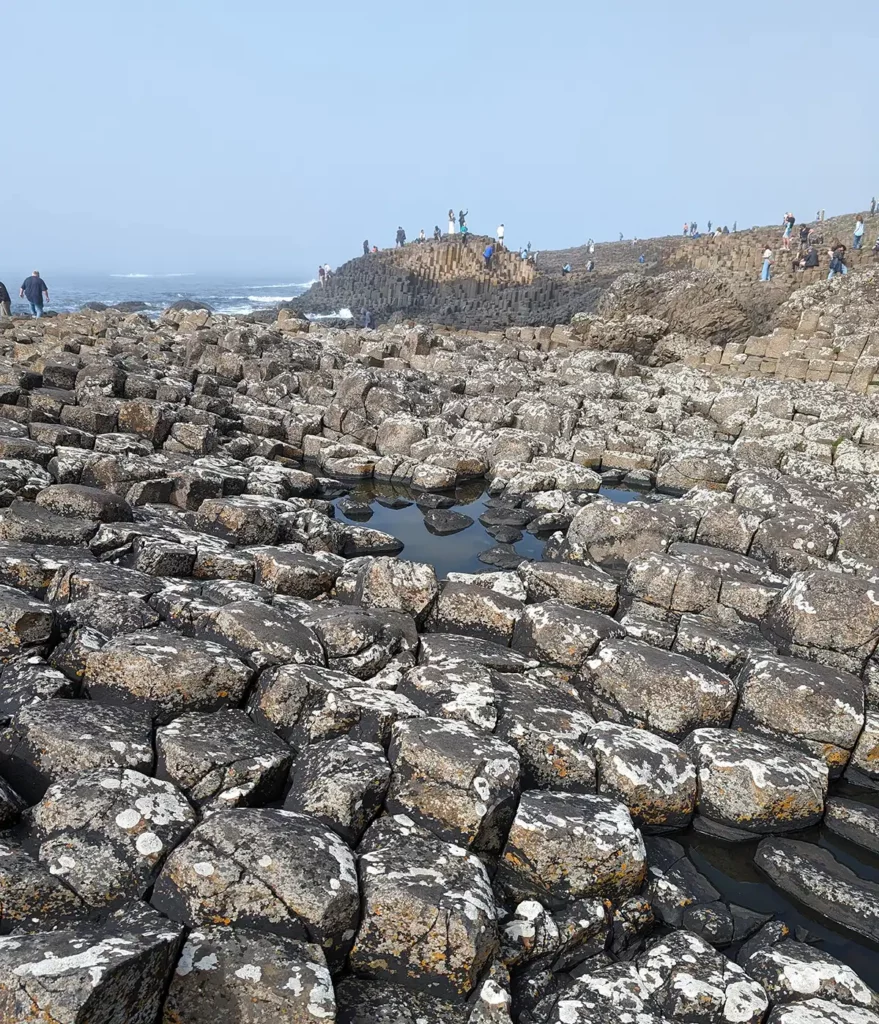
Where to stay near Carrick-a-Rede
When I did my Causeway Coast roadtrip from Belfast, I stayed in Ballycastle. Ballycastle is a small town, less than 6 miles from Carrick-a-Rede, with all the facilities you need for a great trip, including a beach, a supermarket, restaurants and shops. There are plenty of accommodation options in Ballycastle, from glamping pods to luxury hotels.
Check out places to stay in Ballycastle
In summary
Whether you’re visiting for the thrills or the views, the Carrick-a-Rede rope bridge offers an unforgettable experience. With its rich history, stunning coastal views, and a chance to walk across one of Northern Ireland’s most unique landmarks, it’s a must-visit for anyone exploring the Antrim Coast.
Read more: The perfect itinerary and tips for your Northern Ireland road trip

